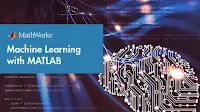Mechanics of Materials 6th Edition
 Ferdinand P. Beer, E. Russell Johnston, Jr., John T. Dewolf, David F. Mazurek ... 832 pages - Publisher: McGraw-Hill; 6th edition (January, 2011) ... Language: English.
Ferdinand P. Beer, E. Russell Johnston, Jr., John T. Dewolf, David F. Mazurek ... 832 pages - Publisher: McGraw-Hill; 6th edition (January, 2011) ... Language: English.Beer and Johnston's Mechanics of Materials is the uncontested leader for the teaching of solid mechanics. Used by thousands of students around the globe since its publication in 1981, Mechanics of Materials, provides a precise presentation of the subject illustrated with numerous engineering examples that students both understand and relate to theory and application. The tried and true methodology for presenting material gives your student the best opportunity to succeed in this course. From the detailed examples, to the homework problems, to the carefully developed solutions manual, you and your students can be confident the material is clearly explained and accurately represented. If you want the best book for your students, we feel Beer, Johnston's Mechanics of Materials, 6th edition is your only choice.




